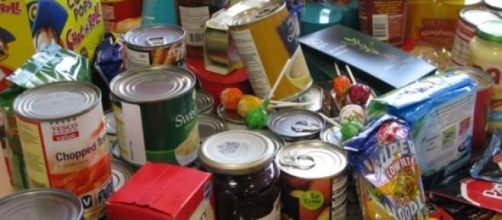Asan avid reader (and people stalker), most of my knowledge about the UnitedStates administration comes from reading and talking to people. It was becauseof the former that I came across the concept of food banks.
FoodBanks are stores and centers that give out food supplies and groceries forextremely low prices, as compared to the market. Sometimes, the supplies mighteven be free. Shopping in a food bank is akin to shopping in a grocerystore—you can choose what you want and pay for it—except for the change inprices.
Despitetheir popularity and necessity, food banks are a relatively new concept in theworld.
The need for food banks arose a few years ago, when America wasexperiencing a great economic downfall. Jobs were declining, and people werebeing laid off left and right. Many lost their homes, assets, and businesses,and national financial growth came to a standstill.
Whenone has limited resources, one naturally starts cutting down on one’s expenses.Food is usually among the first things to be seen off. People start buyingfewer groceries, having two meals instead of three, and removing expensiveingredients from their diets. This, however, may not always equate to benefitsin terms of health and nutrition, especially when it comes to children.
Foodbanks, thus, come as a boon for families and individuals in distress.
What oneneeds to shop from a food bank are papers certifying that one is in need ofassistance. Additionally, food banks are usually private agencies, andtherefore work on funding and supplies from people and organizations. They generallybuy their supplies at very low prices, or obtain them from food drives atgrocery stores.
Fooddrives are food collection efforts organized at one’s local store or supplystation. People either buy extra groceries, and drop the excess into collectionbins, or donate good food that they might not use, such as unopened jars ofjams, spices, mayonnaise and so on. Grocery stores often take out parts fromtheir supplies for donating them to food banks.
Inaddition to selling food directly to customers, food banks also donate or sellgroceries to food pantries and soup kitchens, the difference between them beingthat you do not have to produce any credentials to obtain food at the latter.
Forfood pantries and soup kitchens, just showing up and getting in line means thatone is in need of food. If your financial state does not guarantee you enoughmoney to put food on the table every night, you can obtain the address for thenearest food pantry or soup kitchen from your food bank. However, the “frontline” model, which means selling food directly to customers, is moreconventional on six of the seven continents on which food banks have beenopened.
Asof late 2000, there are over 200 food banks and 6500 food pantries in theUnited States of America for those who are “food insecure”, that is, people whoare not sure whether they will get their next meal. The statistics, whencompared to those of India, are overwhelming, and somehow shameful.
Witha population almost manifolds of the United States and the resources equallyless, India is one country in desperate need of a proper (and corruption free)food banking network. A third of the world’s hunger inflicted populationresides in India. 836 million Indians survive on less than twenty rupees a day(a little more than a quarter of a dollar, that is), and on any given night,over twenty crores sleep with no food in their bellies. With over seventhousand Indians dying of hunger every day, and over twenty five lakhs dyingevery year, hunger remains the foremost cause of death in India, followed bydiseases like AIDS and Cancer. Furthermore, the number of people suffering fromhunger remains more than the number of people below poverty line in the country.While 21.9% of the Indian population lives below poverty line, a staggering 80%of households suffer from hunger.
Theinitiative of Food Banking in India was forwarded by the establishment of theDelhi FoodBank, under the India FoodBanking Network. As part of its objective,the IFBN acquires grains, pulses, vegetables, and other necessities from storesand sources and donates them to old age homes, NGOs, orphanages, child care institutes,substance abuse clinics, shelter homes and so on. However, the Delhi FoodBank,operating in the Delhi/NCR Region, is perhaps the only registered FoodBank inIndia, and people all over the country have to rely on other ways to scroungefor food.
Someof those ways are Bhandaras and Langars. Held in religious instituteslike temples and Gurudwaras, these provide free food to the needy regardless ofage, caste, creed, religion, or sex.
The daily langar held at the Golden Temple in Amristar is supposed to be thelargest organized Langar in theworld. The Singapore Buddhist Lodge is another centre that provides free vegetarianfood to people. The problem, however, persists: Langars and Bhandaras arefar and few in between.
However,the National Food Security Act of India, passed in 2013, came as a boon forover seventy five percent of rural and fifty percent of the urban population bysecuring their access to subsidized staple foods.
Despiteeverything that everyone shouts out for, foodremains one of the most basic necessities of the people. A man can do without ahome, or clothes on his back, but a hungry belly is often enough to turn asaint into a criminal.
At the end, all one needs is two square meals down theirthroat, and some clean water to gulp it down, along with the assurance of itsavailability the next day. Like security, freedom, and integrity, food is ahuman right as well. To have twenty crores sleep without it every night is notonly a shame, but a distress call to Indian authorities. A food bank wouldprobably buy more food with twenty rupees than an individual could, and withsuch centres rising up in every corner of India, the duty would be dividedamong a unified sector working to eradicate one of the oldest and most rabidproblems of this nation.
“What the people of this world wantand have always wanted is bread and peace.”
—Patricia Young, UN GeneralAssembly

